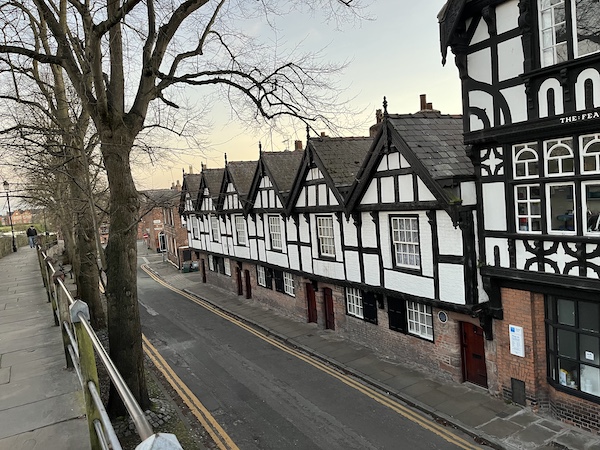'Nine Houses'
The so called 'Nine Houses' are a row of restored 17th century Almshouses of which only six actually survive. Residents of the Almshouses had to be over 65 years of age and abstain from tobacco and alcohol. Restored in 1969, the six remaining houses are a row of attractive black and white timber framed builings on Park Street. Unlike other old houses around the city, sandstone is a feature of their ground floors. Above the small doorways are timber-framed upper storeys with projecting dormer gables. The houses run parallel to the city walls between the Newgate and the Wishing Steps and are best viewed from the city walls.

The parish boundary marker that can still be seen on the facade, above number 14 Park Street, refers to the parishes of St. Olave and St. Michael. St. Olave's was given a curacy in 1744 and continued until 1839 when it was reunified with the parish of St. Michael's.

Adjoined to the north of the 'Nine Houses' is a large black-and-white house of 1881 by W.H. Kelly with the inscription "THE : FEAR : OF : THE : LORD : IS : A : FOUNTAIN : OF : LIFE :". The inscription is said to have been copied from a coin found on the site. Present day (2025) the building is used as a dental surgery, so the inscription may give patients something to muse over as they enter the bulding for surgery.

Like many examples of Victorian black-and-white houses, the adjoining building is larger and more elaborate than the 17th century Almshouses.
